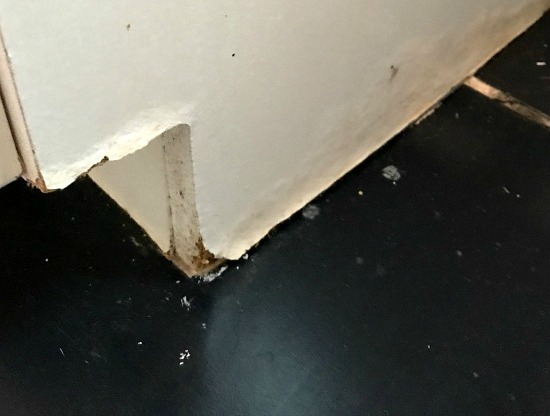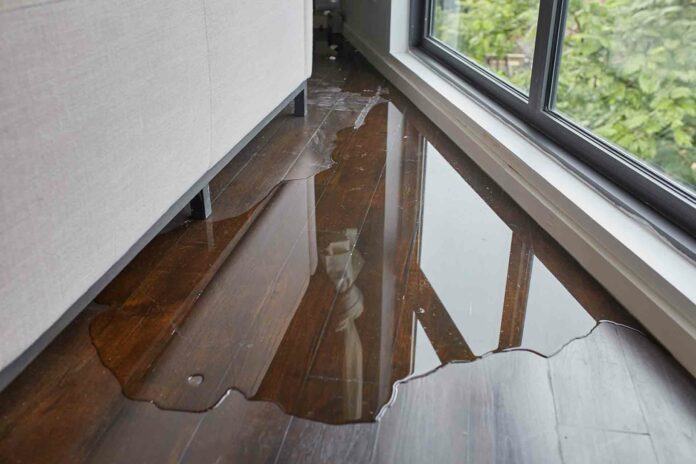The bathroom is one of the most common places for water damage. This is because bathrooms contain many potential water sources, such as showers, sinks, toilets, and tubs.
Water damage can occur when any of these sources leak, overflow, or the bathroom’s plumbing system is faulty.
Water Damage in Bathrooms
In some cases, water damage can also be caused by flooding from outside the bathroom. Regardless of the cause, water damage can be a serious problem that should be addressed immediately.
Left unaddressed, water damage can lead to mold growth, posing a serious health hazard. It can also cause structural damage to bathroom walls, floors, and ceilings.
If you suspect your bathroom has suffered water damage, it is important to call a professional immediately. They can assess the extent of the damage and take steps to prevent further damage.
Flooding Damage

There’s nothing worse than coming home to a flooded bathroom. Water can cause all sorts of damage, and it’s important to act quickly to minimize the damage.
One of the first things you’ll want to do is assess the situation and see if there’s any water damage to your bathroom vanity. If there is, you’ll want to take care of it immediately.
The first step is to remove all of the water from the area. You can do this with a wet/dry vacuum or simply mopping the water with a towel. Once you’ve removed the water, you’ll want to dry the area off as much as possible. A hairdryer on low heat can help speed up this process.
Next, you’ll want to assess the extent of the damage. If it is only minor, you may be able to repair it yourself with sandpaper and wood filler.
However, if there is major damage, you’ll need to call a professional to repair or replace it. Either way, taking care of water damage immediately is important to prevent further damage to the bathroom vanity.
Sewage Water Damage

If you’ve ever had a sewage water leak in your bathroom, you know how gross and smelly it can be. Sewage water contains harmful bacteria and viruses that can cause serious illness, so it’s important to clean up any leaks immediately.
Unfortunately, sewage water can also damage your bathroom fixtures and floors if it’s not cleaned up quickly.
That’s a Lot of Damage! – Things You Need To Know To Deal With Bathroom Damage
Here’s what you need to know about dealing with a sewage water leak in your bathroom.

No amount of Flex Seal or Flex Tape will repair the damage left behind by water damage. The wood elements will cause the more common visual damage. The cabinet and hardwood floors will be damaged by water.
White bathrooms are the most common option, so water or sewage damage will leave visible stains where the water level reaches. Any baseboard attached to the walls and floor will also show the same water damage.
Hardwood floors will be the other major damage besides the vanity. Much like kitchen cabinets, wood will warp when exposed to moisture.
Due to actual flooded damage, the flooring will expand and show unevenness. Many people choose to stick with tile in the bathroom more often as it is more water-resistant than hardwood floors. Tile can be mopped easily to clean up water damage from the toilet, sink, or shower.
Functionality Over Just Aesthetics

When initially designing your bathroom, don’t focus solely on the room’s aesthetics. Pay attention to the type of home you are remodeling and the location. Does the home share a water line with other houses? Does the area have a lot of rainfall?
A bathroom can be one of the most relaxing rooms in a house, but it can also be one of the most dangerous.
Every year, hundreds of people are injured or killed by bathroom accidents. One of the most common hazards is flooding. A bathroom can become a slip-and-fall hazard with a few inches of water.
A floating bathroom vanity can help to prevent this type of accident. Raising the vanity off the ground allows water to drain away from the bathroom and prevents it from pooling on the floor.
In addition, a floating vanity is easier to clean than a traditional vanity, as there are no nooks and crannies for dirt and dust to accumulate. Choosing a floating bathroom vanity is a smart way to help keep your bathroom safe and clean.
Bathroom Flooring
When choosing tile for your bathroom flooring, remember several things.
First, bathroom floors are subject to a lot of moisture, so it’s important to choose a waterproof and slip-resistant tile.
Second, bathroom floors are also susceptible to flooding, so choosing a tile that is easy to clean and won’t be damaged by water is essential.
Finally, you’ll want to consider the overall style of your bathroom when selecting a tile.
Choose a tile that complements the rest of the room for a cohesive look. With these factors in mind, you will find the perfect tile for your bathroom flooring.








